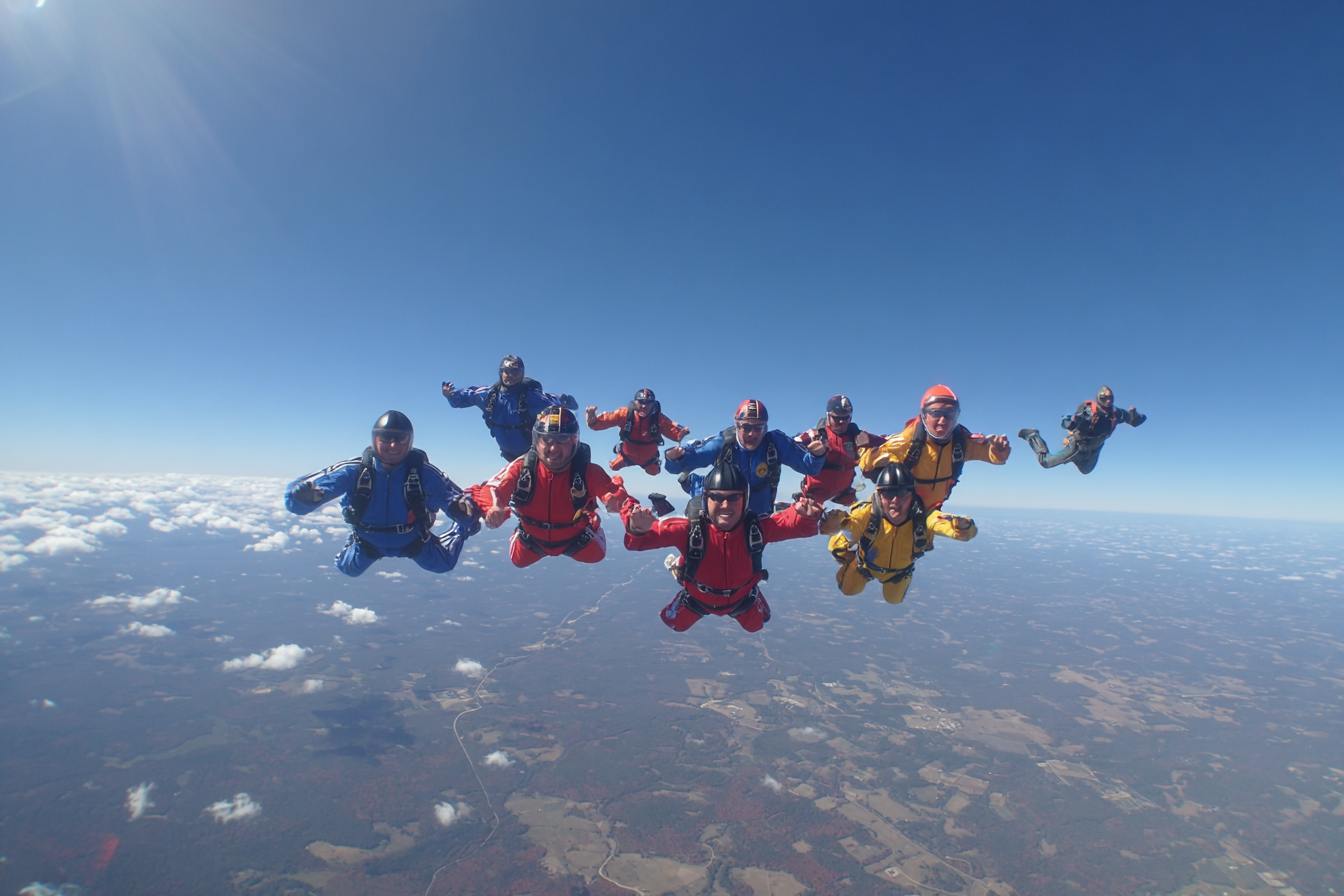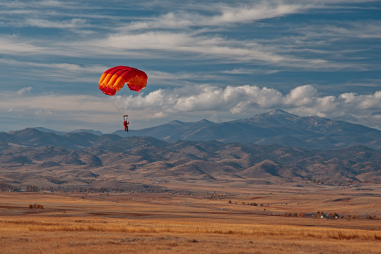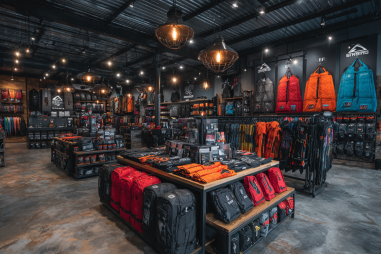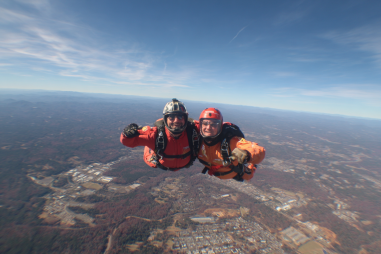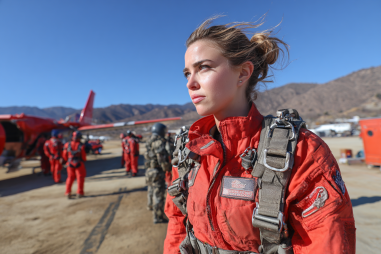Skydiving is more than just the adrenaline rush of jumping out of a plane. It’s a diverse sport with various disciplines, each offering unique thrills, skills, and challenges. Whether you’re a newcomer eager to experience the exhilaration of freefall or an experienced jumper aiming to refine your technique, understanding the different types of skydiving disciplines can help you find the perfect fit. Let’s dive into the world of skydiving styles and explore what makes each one special.
Introduction to Skydiving Disciplines
Skydiving disciplines refer to the specialized styles and techniques that skydivers engage in during their jumps. Each discipline has its own set of skills, objectives, and equipment requirements, reflecting the diverse ways people can experience the thrill of falling from thousands of feet above the ground. These variations allow skydivers at all levels to find a niche that suits their personality, goals, and abilities.
Overview of Main Skydiving Styles
Among the myriad of skydiving disciplines, three of the most popular and foundational styles include Formation Skydiving, Freeflying, and Wingsuit Flying. Each offers distinct experiences and challenges.
Formation Skydiving
Formation skydiving, often called “relative work,” involves multiple skydivers creating geometric shapes or “formations” in freefall by holding onto each other. It requires team coordination, precise body control, and a deep understanding of fall rates. Precision and timing are crucial, as jumpers build complex patterns within the brief window of freefall before deploying their parachutes. This discipline is fantastic for those who enjoy teamwork and want to experience the social aspect of the sport.
Freeflying
Freeflying is a dynamic style where skydivers use various body positions other than the traditional belly-to-earth position, such as head-up, head-down, or sit-flying. This discipline allows greater freedom of movement and often involves faster speeds and more three-dimensional maneuvers than formation skydiving. Freeflyers enjoy pushing the limits of human flight in the air with flips, rolls, and barrel rolls, offering a thrilling and visually stunning experience.
Wingsuit Flying
Wingsuit flying elevates skydiving to new heights by incorporating a specialized suit equipped with fabric between the legs and arms, creating more surface area to glide through the air. Wingsuit fliers experience a feeling closer to actual flying, with significantly slower descent rates and the ability to cover horizontal distances. This discipline requires advanced skills, as control and navigation become paramount when gliding near terrain or in formations with others.
Speed Skydiving: The Race Against Gravity
Speed skydiving is an adrenaline-packed discipline focused on achieving the highest possible vertical speed during descent. Unlike other disciplines that emphasize formations or maneuvers, speed jumpers aim purely to accelerate their fall using streamlined body positions to minimize drag. The thrill lies in challenging gravity itself and ringing in speeds over 300 mph in some cases. This discipline attracts those who crave raw intensity and want to compete in a high-adrenaline, measured environment.
Canopy Piloting and Accuracy Landing
While much of skydiving excitement focuses on freefall, landing is equally important and can be a discipline in itself. Canopy piloting involves flying parachutes closer to the ground in high-speed turns, dives, and swoops, showcasing precision flying and control. Accuracy landing hones the skill of touching down on a very small target, testing a jumper’s ability to steer and manage their parachute in challenging conditions. Both canopy piloting and accuracy landing require sharp focus and are beloved by those who enjoy the technical aspect of parachute control and graceful finishes.
Tandem Skydiving and Student Jumps
For beginners, tandem skydiving provides a safe and exciting introduction to the sport. In tandem jumps, a novice is harnessed to an experienced instructor who controls the entire skydive, allowing the student to experience freefall without needing extensive training. Similarly, student jumps under instructors’ supervision allow for gradual skill building and often involve static line or accelerated freefall techniques. Both options serve as gateways, building confidence and foundational skills before exploring specialized disciplines.
Choosing the Right Discipline for Your Skill Level
Choosing a skydiving discipline depends largely on your experience, interests, and fitness level. Beginners typically start with tandem or student jumps to gain comfort and basic skills. After completing initial training, many proceed to formation skydiving as it provides a good foundation in body control and teamwork. More experienced jumpers might venture into freeflying or wingsuit flying to challenge themselves further. Speed skydiving and canopy piloting are suited to thrill-seekers who have mastered fundamental skills and want to push physical and mental limits. Ultimately, the best choice aligns with what excites you and your willingness to commit to learning the necessary skills safely.
Equipment Differences Across Disciplines
Each skydiving discipline requires specific equipment tailored to its unique demands. Formation skydivers usually use standard jumpsuits with grips for holding teammates. Freeflyers wear streamlined suits that reduce drag and enhance mobility in varied positions. Wingsuit flying necessitates specialized suits with wing membranes to create lift. Speed skydivers favor tight-fitting aerodynamic suits and helmets to minimize wind resistance. Canopy pilots often modify their parachutes for high-performance handling, while beginners use standard round or square parachutes optimized for stability and ease of control. Proper equipment choice is critical for both performance and safety, reinforcing the need for discipline-specific gear.
Safety Considerations for Each Type
Safety is paramount in all types of skydiving, but each discipline presents its own risks and precautions. Tandem and student jumps involve direct supervision and simplified protocols to minimize risks for novices. Formation skydiving requires awareness of others in freefall to prevent collisions, demanding strong communication and teamwork. Wingsuit flying and speed skydiving come with higher speeds and require advanced control to avoid accidents, including terrain collisions and parachute deployment mishaps. Canopy piloting puts jumpers closer to the ground at greater speeds, emphasizing the importance of precision to prevent hard landings. Regardless of style, thorough training, consistent practice, and adherence to safety standards are essential for an enjoyable and incident-free experience.
Finding Your Favorite Skydiving Discipline
Skydiving is a versatile sport that caters to a wide range of enthusiasts, from beginners looking for a taste of freefall to experts chasing new thrills. Exploring the different disciplines offers the chance to discover what resonates most—whether it’s working with a team in formation, flying like a bird in a wingsuit, racing gravity in speed skydiving, or perfecting your landing with canopy piloting. The sky is a playground with endless possibilities, and with dedication and curiosity, you can find the discipline that feels like your true skydiving home.

